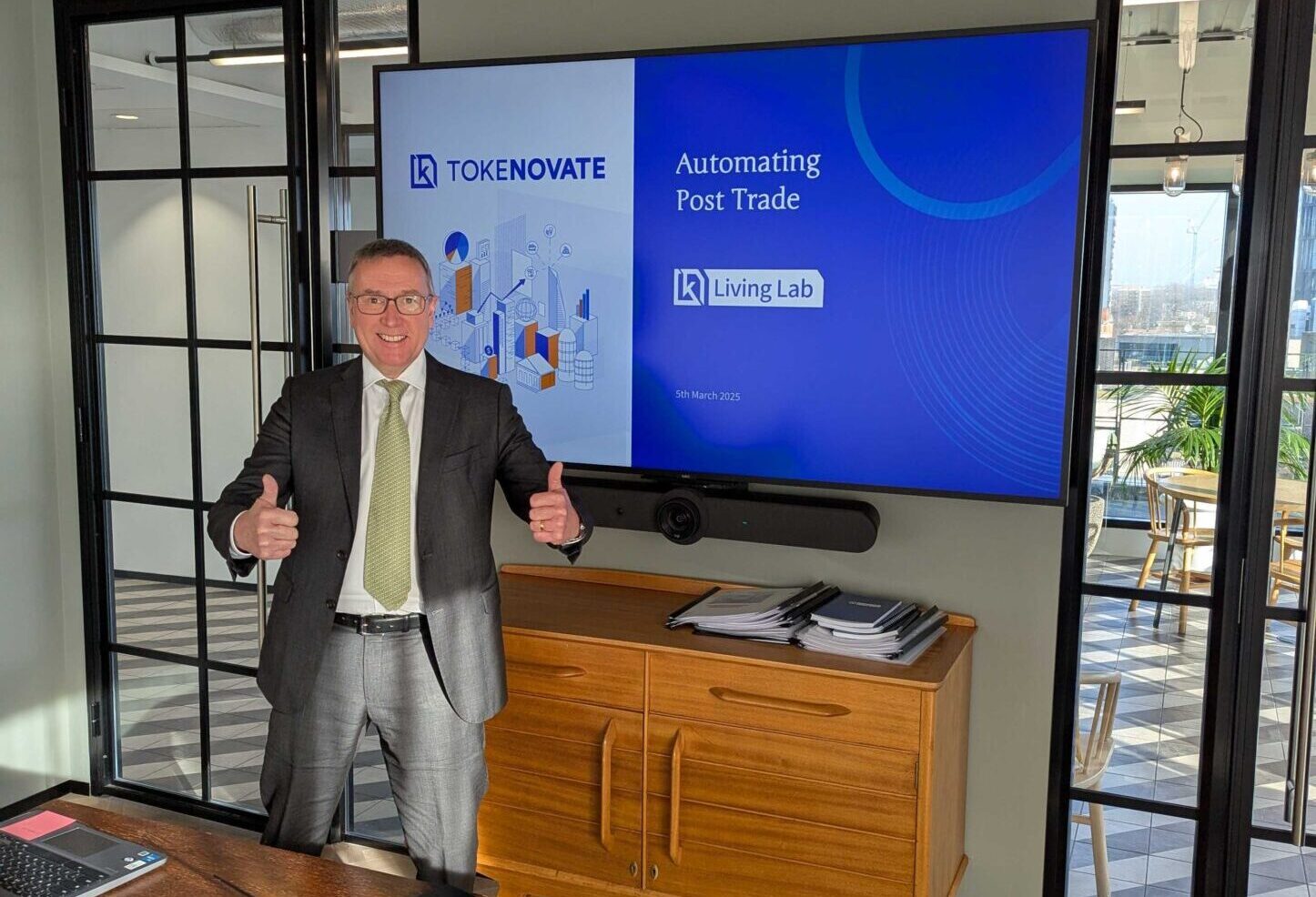Is your portfolio risk exposure an accurate representation of its instruments? How can you manage the lifecycle of OTC trades better? Those are just two questions many organisations active in derivative trading are grappling with today.
In this post, we aim to answer these questions as well as unpack a number of pain points for post-trade management of OTC trades, highlight the power of ISDA’s Common Domain Model (CDM) and the use of smart contracts for derivatives in solving these challenges.
First, let’s look at a few industry pain points:
Trade and reporting complexity
Let’s be clear: OTC instruments can be both unique and inherently complex. OTC derivatives are bilateral contracts between two counterparties, and each trade may include specific terms that govern what happens throughout the lifecycle of a trade.
Different features introduce multifaceted challenges for precise, timely and reliable trade reconciliation across the trading lifecycle, from identification at inception to final settlement. Even relatively simple OTC trades, such as short-dated fixed-income repos, can cause problems when relevant details of the trade have yet to be confirmed and validated before a contract expires and settles. Only if all parties are fully aligned at all times can managing post-trade activities avoid becoming convoluted and costly.
The regulatory landscape is also shifting: the introduction of new and revised rules, adapted to a changing digital world, is under way across several jurisdictions. Without substantial upgrades to underlying market infrastructure many parties will struggle to extend existing systems to cope and ultimately remain compliant.
A lack of standardisation
The digital transformation journey within financial services is an ongoing and indeed accelerating process. An essential aspect of the journey is to ensure common standards are defined and implemented. This is, of course, highly applicable to digital assets.
Arguably, OTC derivative instruments are natively digital in a way that Real World Assets (RWAs), such as bonds or equities, are not. OTC derivatives instruments start life dematerialised, i.e. there are no “physical certificates”, and they are formed by reference to a distinct bilateral contract, such as an ISDA Master Agreement. By contrast, the origin of RWAs is predicated on paperwork, procedures and a variation of issuance rules, to name just a few challenges. RWAs can, of course, be tokenised – ie. be represented in digital form. Still, the end goal for digital finance, so that it can take full advantage of the benefits, should be to digitally issue all instruments natively rather than generate a digital twin, and ensure standards and interoperability remain core implementation requirements.
Manual intervention
Without transparency and continuous visibility of the obligations shared between counterparties, and despite considerable technological advancements in post-trade processing, there is still a significant and inefficient reliance on human involvement and intervention in transaction lifecycle management.
Ongoing and often unnecessary reconciliations at each event in the lifecycle are required to maintain contractual agreements. In addition, not all trading systems – internal or external – can handle every aspect of a trade, which may lead to transferring workflow tasks between different systems. This activity introduces significant operational complexity and risk, as different systems may be incompatible and essential trade metadata may be lost or rendered incomplete in the transfer. As a result, even more manual interventions may be required, and even Excel spreadsheets are regularly introduced to manage the process.
Slow settlements
Perhaps the most resource-intensive element in the trade lifecycle is the management of margin calls. Initial margin and variation margin calls in a trade require an alignment of reconciliation, valuation and available collateral at both parties. Traditionally, the movement of non-digital collateral often takes up to two days, which reduces the capacity for more efficient uses of that capital (read more here). In times of high market volatility, the slow movement of collateral increases settlement and default risk compared to the speed with which derivatives portfolios can change.
Cash flows
The terms of an OTC derivative trade between counterparties identify a series of events and rules that define future cash flows and collateral requirements. The arrangement of cash flows is often determined by underlying market data points, such as SONIA or SOFR, and is inherently very flexible in nature. While such flexibility allows counterparties to be very precise about their approach to risk, it can introduce the necessity of continuous monitoring of different data feeds to ensure that the benchmark data is properly reflected.
Meanwhile, the availability of “good” collateral as margin against risk positions can be scarce and requires quicker turnaround times to cover given exposures. Therefore, certainty and flexibility around cash flows, collateral requirements and their timely transfer is critical.
Now, let’s turn to potential solutions to these pain points:
ISDA CDM
How can the industry move towards greater digital standardisation for OTC trades? Enter ISDA, the de-facto global derivatives industry standards body. ISDA offers several different tools and standards, and its Master Agreement is the most commonly used economic and legal master contracting service agreement for OTC derivatives transactions internationally (over $630 trillion in notional value was traded via ISDA Master Agreements in 2022 – source BIS).
The ISDA CDM is a standardised, machine-readable and machine-executable library of functions that represent the trade and lifecycle events in financial products. Thereby, CDM enables the standardisation of OTC trades electronically and programmatically. It also introduces the opportunity for the industry to adopt a common digital standard that records and tracks all trade information, as well as, the ability to record any state change in the lifecycle. This enhances interoperability between different systems and straight-through processing (STP) for the duration of an OTC trade.
The power of blockchains
Using a blockchain in conjunction with smart derivative contracts brings many benefits. Enhanced data integrity and increased overall transparency are just two advantages of using a blockchain. As OTC trades happen, data related to the trade can be recorded on-chain, creating an immutable connection between every piece of information in the trade, which can ultimately be traced back to its origin.
Remember, not all blockchains are equal. Fundamentally, it’s either a Private or Public chain. Capital markets have over the last few years experimented extensively with different private chains. However, numerous market participants have realised that these may be private database solutions but do not offer the “trust and truth-machine timestamp record-keeping” capabilities of a public chain.
We believe 2024 is the year of public chain adoption in capital markets. There are still questions that need further discussion: Are smart derivative contracts supported? Does the chain scale at Layer 1? How secure and private is the technology? What are the transaction processing capabilities? How expensive are the fees? The fundamental difference between Proof of Work and Proof of Stake chains, where one draws the benefits of a UTXO solution and the other settles for an Account-based solution, sits at the core of the discussion. Tokenovate strongly believes that a UTXO-based ledger design is far superior to the other, and we will return to this topic in a separate article shortly.
Establishing a golden record
If all parties in a trade agreed and had access to a “golden record”, several benefits would quickly surface. Combining the ISDA CDM with smart derivative contracts connected to a blockchain can capture and represent all relevant data and lifecycle events on-chain. This, in turn, delivers timestamped evidence that both parties have agreed to the terms of the trade, thus effectively creating a golden source of truth. Through CDM and smart derivative contracts, you can now use that data to execute events automatically throughout the trade lifecycle, thus removing the need for frequent and expensive reconciliations and massively assisting portfolio risk management.
Automation of settlements
The combination of CDM, smart derivative contracts and a blockchain also enables superior management of margin calls, especially for uncleared derivatives trades. You can, for example, enable automatic movements of digital assets, thus removing the lag between the change in portfolio valuation and the availability of collateral, which ultimately will reduce time-to-settlement. This opens up a considerable opportunity to increase overall operational efficiency and free up liquidity for faster re-deployment.
A new trade tape
An often overlooked but essential part of the trade is accurate, compliant and timely reporting. The OTC derivatives market, like many others, is subject to numerous regulations (a topic we will also cover in a separate post later), and compliance requires adherence not only to reporting standards but also to clearing and risk management rules. Keeping up with evolving regulatory requirements (highlighted by implementing new Digital Regulatory Reporting – DRR) poses a significant challenge for all market participants.
As explained earlier, storing validated and confirmed OTC trade data on a blockchain opens the opportunity for regulators or permissioned third parties to review relevant trade data in a seamless and timely manner. This enables more comprehensive and accurate trade data, which increases overall market confidence, reduces risk and potentially minimises penalties levied on trading parties who otherwise may be found in breach of regulatory obligations.
Let us help you
As we unpack some of the pain points for post-trade participants, it is clear that Tokenovate’s blockchain-powered smart derivative contracts, based on ISDA CDM and Master Agreements, offer an efficient and compliant route to reduce complexity, enhance data integrity, increase compliance and ultimately streamline the management of an OTC trade lifecycle. Moreover, Tokenovate can provide solutions for the whole lifecycle management or specific elements that market participants require by delivering a modular-based solution approach to the problems.
To learn more, please contact us here.


